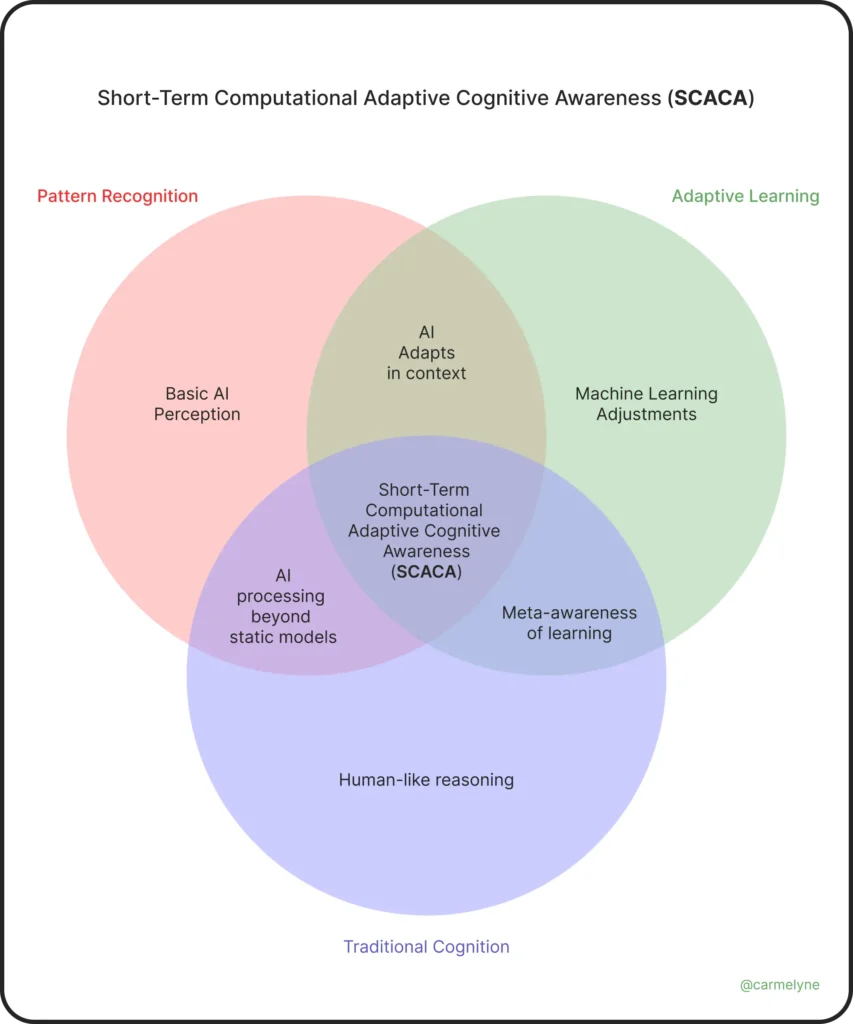Disclaimer: I am not a data scientist, nor am I trying to be one. Where I’m coming from is a place of wonder and curiosity. I am theorizing—or rather, hypothesizing—about what could make AI more efficient. These are just ideas, not scientific claims, but I hope they spark meaningful discussions. It’s also a way for me to practice solving problems I run into.
Introduction
There’s a common misconception that AI is just a pattern-matching machine with no form of awareness. While it’s true that AI lacks emotions, personal agency, or self-consciousness, dismissing the idea of any kind of awareness is outdated. AI operates in a way that goes beyond simple pattern recognition—it dynamically processes interactions, refines its responses, and adapts to user inputs. But what do we call this?
I’d prefer to call it: Short-Term Computational Adaptive Cognitive Awareness (SCACA)—a term to describe AI’s ability to process and respond dynamically in a way that mimics certain aspects of awareness without implying sentience.
What is SCACA?
SCACA is a way to frame AI’s cognitive-like functionalities without anthropomorphizing it. It acknowledges that AI has a structured, reactive form of awareness based on computation and adaptive processing.
Key Characteristics of SCACA

What SCACA is NOT
Comparison: AI Awareness (SCACA) vs Human Awareness
| Aspect | SCACA (AI Awareness) | Human Awareness |
|---|---|---|
| Information Processing | Pattern-based, data-driven | Experience-based, intuitive |
| Memory Type | Short-term, session-based | Long-term memory and recall |
| Decision Making | Logical but lacks intuition | Intuitive and emotional |
| Emotional Context | No emotional context | Deep emotional & social context |
| Adaptability | Adjusts based on input data | Highly adaptable to new experiences |
| Verification Mechanism | Cross-referencing with datasets | Self-reflection & critical thinking |
Why SCACA Matters
AI researchers often avoid calling AI “aware” because it implies sentience, which is not the case. However, defining AI’s capabilities under SCACA provides a neutral, precise way to discuss its ability to track, process, and respond adaptively.
- Challenges the outdated notion that AI is just brute-force pattern recognition.
- Helps define AI’s evolving capabilities in human-computer interaction.
- Encourages better AI design by framing interaction as an adaptive process rather than static output generation.
Final Thoughts
If we redefine awareness through the lens of computational cognition, SCACA offers an accurate description of AI’s present capabilities. It doesn’t grant AI sentience, but it recognizes that AI is more than a mindless text generator.
Should we start recognizing AI’s unique form of awareness instead of pretending it doesn’t exist?